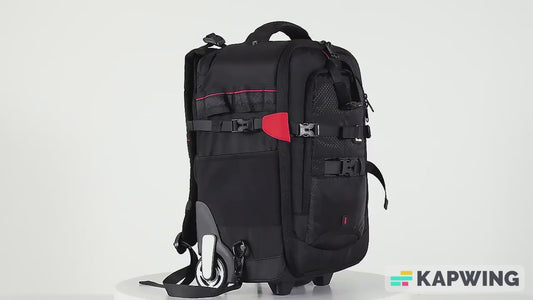The Global Mpox Outbreak: A Comprehensive Overview and Call to Action
Introduction
In the ever-evolving landscape of global health, a new challenge has emerged: the mpox outbreak. Formerly known as monkeypox, this viral infection has rapidly spread across continents, prompting the World Health Organization (WHO) to declare it a global health emergency. As a close relative of smallpox, mpox poses significant health risks and demands urgent international attention. This comprehensive analysis delves into the current state of the mpox outbreak, its implications, and the coordinated efforts required to contain its spread.
Background and Context
Historical Perspective
Mpox first came to light in 1958 during outbreaks of a pox-like illness in research monkeys. For decades, human cases were primarily confined to central and western Africa, where individuals had close interactions with infected animals. However, the landscape changed dramatically in 2022 when mpox was confirmed to be transmissible through sexual contact, leading to unprecedented outbreaks in over 70 nations that had never reported cases before.
Current Relevance
The recent declaration of mpox as a global health emergency by the WHO underscores the gravity of the situation. This designation, the highest level of alert under global health regulations, signals the need for a coordinated international response to prevent the outbreak from escalating into a full-blown pandemic.
Understanding Mpox
Mpox is a viral infection closely related to smallpox, but generally less severe and less contagious. It spreads through close contact, including sexual contact, and can also be transmitted through contaminated items such as bedding or clothing.
Symptoms and Progression
The symptoms of mpox typically include:
- Fever
- A painful, itchy rash that progresses from macules to papules, vesicles, pustules, and finally scabs
- Headaches
- Muscle and back pain
- Fatigue
- Swollen lymph nodes
The illness usually lasts for 2-4 weeks, with most people recovering without treatment. However, severe cases can occur, particularly in children, pregnant women, and immunocompromised individuals.
Latest Statistics and Trends
As of March 2023, the global mpox situation remains concerning:
- Global Cases: 86,496 laboratory-confirmed cases and 111 deaths have been reported to the WHO from 110 countries/areas/territories.
- Regional Hotspot: The Democratic Republic of Congo (DRC) has reported the highest number of cases, exceeding 14,000, and accounted for 96% of confirmed incidents in March 2023.
- Alarming Increase: There has been a 160% rise in cases compared to the same timeframe last year, with deaths increasing by 19%.
The Emergence of a New Variant
A new variant of mpox, designated as clade Ib, has emerged in the DRC. This variant is particularly concerning due to its:
- Higher transmissibility
- More severe health implications
- Potential fatality rate of up to 10%
The emergence of this new variant has raised alarm bells in the global health community, emphasizing the need for intensified surveillance and control measures.
Expert Opinions and Insights
Leading health experts have weighed in on the mpox outbreak, providing valuable insights into the challenges and necessary actions:
WHO Director-General
"The virus could be effectively contained if we take the right measures at the right time. We are advocating for international collaboration to secure funding and organize efforts to combat the outbreak."
This statement underscores the importance of timely and coordinated global action in containing the spread of mpox.
Dr. Jean Kaseya, Africa CDC
"The agency's announcement of a public health emergency aims to 'mobilize our institutions, our collective will, and our resources to respond promptly and effectively'."
Dr. Kaseya's comment highlights the critical role of resource mobilization and institutional cooperation in addressing the outbreak.
Dr. Boghuma Titanji, Emory University
"It remains unclear why children are disproportionately affected by mpox in Congo. It might be due to increased susceptibility among children or social factors, such as overcrowding and exposure to infected parents."
Dr. Titanji's observation points to the need for further research into the factors influencing mpox transmission and severity, particularly in vulnerable populations.
Case Studies: Responses and Challenges
Democratic Republic of Congo
The DRC, as the epicenter of the current outbreak, has implemented a multi-faceted approach to combat mpox:
- Intensified surveillance
- Enhanced clinical case management
- Improved laboratory capacities
- Strengthened infection prevention and control (IPC) practices in health facilities
- Robust risk communication and community engagement activities
These efforts, supported by the WHO and other partners, demonstrate the comprehensive approach required to tackle the outbreak effectively.
South Kivu Province
The outbreak in South Kivu Province has continued to spread within the region and recently to neighboring North Kivu. In response, authorities have:
- Strengthened surveillance throughout the country, especially in priority provinces
- Implemented targeted interventions to contain the spread
- Enhanced cross-border collaboration to prevent further transmission
This case illustrates the importance of regional cooperation and the challenges of containing an outbreak in a complex geographic and social landscape.
Impact Analysis
Public Health Implications
The mpox outbreak has far-reaching public health implications:
- Resource Mobilization: The declaration of a global health emergency has triggered the mobilization of resources to prevent the outbreak from becoming a pandemic.
- Health System Strain: Affected regions, particularly those with already strained health systems, face significant challenges in managing the outbreak alongside other health priorities.
- Global Health Security: The rapid spread of mpox underscores the interconnectedness of global health and the need for robust international health regulations and cooperation.
Economic Impact
The economic ramifications of the mpox outbreak are significant:
- Healthcare Costs: Increased spending on treatment, vaccination, and prevention measures strains healthcare budgets.
- Productivity Loss: Illness and quarantine measures can lead to reduced workforce productivity in affected areas.
- Travel and Trade: Potential travel restrictions and trade disruptions could have broader economic impacts, particularly in regions heavily reliant on tourism or international trade.
Comparisons with Other Diseases
To provide context, here's a comparison of mpox with smallpox and COVID-19:
| Disease | Transmission | Symptoms | Fatality Rate |
|---|---|---|---|
| Mpox | Close contact, sexual contact, contaminated items | Fever, rash, headaches, muscle and back pain, fatigue, swollen lymph nodes | Up to 10% (clade I), up to 1% (clade II) |
| Smallpox | Close contact, contaminated items | Fever, headache, rash | Up to 30% |
| COVID-19 | Respiratory droplets, close contact | Fever, cough, shortness of breath, fatigue | Up to 0.7% (Omicron variant) |
This comparison highlights the unique characteristics of mpox and its potential severity, particularly with the emergence of the new clade Ib variant.
Controversies and Debates
The mpox outbreak has sparked several controversies and debates within the global health community:
Vaccine Availability in Africa
There is significant concern about the lack of vaccines and treatments available in Africa, despite the continent bearing the brunt of the outbreak. This disparity has raised questions about global health equity and the need for more equitable distribution of medical resources.
Transmission Routes and Potential Reservoir Hosts
Ongoing debates surround the specific routes of animal-to-human transmission and the range of potential reservoir hosts. Understanding these factors is crucial for developing effective long-term prevention strategies.
How to Prevent Mpox Transmission
Preventing the spread of mpox requires a combination of personal precautions and public health measures:
- Avoid Close Contact: Limit physical contact with individuals showing symptoms of mpox or those who have been diagnosed with the disease.
- Use Personal Protective Equipment (PPE): When caring for someone with mpox, use appropriate PPE, including masks, gloves, and protective clothing.
- Practice Good Hygiene: Wash hands frequently with soap and water, or use an alcohol-based hand sanitizer. Avoid touching your face with unwashed hands.
- Avoid Contaminated Items: Do not touch or share items that may have come into contact with the virus, such as bedding, clothing, or towels used by an infected person.
- Consider Vaccination: If you are in a high-risk group or have been exposed to mpox, consult with healthcare providers about vaccination options.
- Isolate If Infected: If you suspect you have mpox or have been diagnosed, isolate yourself to prevent transmission to others.
- Seek Medical Attention: If you develop symptoms or have been in close contact with someone infected, seek medical attention promptly.
FAQ Section
What is mpox?
Mpox is a viral infection closely related to smallpox. It causes a rash and flu-like symptoms and can be transmitted through close contact with infected individuals or animals.
How is mpox transmitted?
Mpox is primarily transmitted through close physical contact, including sexual contact. It can also spread through respiratory droplets during prolonged face-to-face contact and through contact with contaminated materials such as bedding or clothing.
What are the symptoms of mpox?
Common symptoms include fever, a painful rash that progresses through several stages, headaches, muscle and back pain, fatigue, and swollen lymph nodes. The rash typically starts on the face and spreads to other parts of the body.
What is the fatality rate of mpox?
The fatality rate varies depending on the clade (variant) of the virus. For clade I, it can be up to 10%, while for clade II, it's generally up to 1%. The newly emerged clade Ib in the DRC has shown a higher fatality rate, raising concerns among health officials.
What measures can halt the spread of mpox?
Key measures include vaccination of high-risk groups, prompt isolation and treatment of infected individuals, contact tracing, public education about transmission and prevention, and international cooperation in surveillance and response efforts .
Challenges and Solutions
Vaccine Availability
Challenge: Limited availability of mpox vaccines in Africa, where the outbreak is most severe.
Solution: International efforts to increase vaccine production and ensure equitable distribution, prioritizing regions with the highest need. This may involve technology transfer agreements, increased funding for vaccine manufacturing, and improved global supply chain management.
Health System Capacity
Challenge: Strained health systems in affected regions, particularly in resource-limited settings.
Solution:
- International support to bolster healthcare infrastructure
- Training programs for healthcare workers on mpox management
- Implementation of telemedicine solutions to extend healthcare reach
- Establishment of dedicated mpox treatment centers to manage severe cases
Public Awareness
Challenge: Ensuring widespread understanding of mpox transmission and prevention measures.
Solution:
- Targeted education campaigns using various media channels
- Community engagement through local leaders and influencers
- Clear, culturally sensitive messaging about prevention and symptoms
- Collaboration with social media platforms to combat misinformation
Ethical Considerations and Best Practices
Equitable Distribution of Resources
Ensuring fair allocation of vaccines, treatments, and medical supplies is crucial. This involves:
- Prioritizing high-risk groups and regions with the highest disease burden
- Implementing transparent distribution mechanisms
- Addressing barriers to access, including cost and transportation
Privacy and Confidentiality
Protecting the privacy of diagnosed individuals is paramount to prevent stigmatization and encourage testing. Best practices include:
- Implementing strict data protection measures in healthcare settings
- Training healthcare workers on patient confidentiality
- Anonymizing public health data to protect individual identities
Cultural Sensitivity
Developing culturally appropriate public health interventions is essential for effective outbreak control. This involves:
- Engaging local communities in the development of health messages
- Respecting cultural practices while promoting safe behaviors
- Collaborating with traditional healers and community leaders
Success Stories
South Kivu Province
The South Kivu Province in the DRC has demonstrated successful implementation of surveillance and case management strategies. Key achievements include:
- Rapid detection and isolation of new cases
- Effective contact tracing to limit spread
- Community engagement to promote preventive measures
- Integration of mpox surveillance with existing health programs
International Collaboration in Research
The global scientific community has shown remarkable cooperation in mpox research:
- Rapid sharing of genomic data to track viral evolution
- Collaborative clinical trials for new treatments and vaccines
- Joint efforts in developing diagnostic tools, such as the GeneXpert cartridges
Tools, Equipment, and Resources
GeneXpert Cartridges
These rapid diagnostic tools have been crucial in improving mpox detection:
- Provide results in under 90 minutes
- Enable point-of-care testing in resource-limited settings
- Facilitate quick isolation and treatment decisions
Personal Protective Equipment (PPE)
Essential for healthcare workers and caregivers, including:
- N95 respirators or medical masks
- Gowns and gloves
- Face shields or goggles
Vaccines
Two key vaccines are being used to combat mpox:
- LC16: A live attenuated vaccine developed in Japan
- MVA-BN (Jynneos): A non-replicating, live vaccine approved for mpox prevention
Conclusion
The mpox outbreak presents a significant global health challenge that requires urgent and coordinated action. Key takeaways include:
- The declaration of mpox as a global health emergency underscores the severity of the situation.
- The rapid spread and emergence of new variants, particularly in the Democratic Republic of Congo, demand intensified surveillance and control measures.
- International collaboration is crucial for containing the outbreak, including equitable distribution of vaccines and resources.
- Public awareness, vaccination efforts, and adherence to preventive measures are key to halting the spread of mpox.
As we face this evolving health crisis, continued vigilance, research, and global cooperation will be essential in mitigating the impact of mpox and preventing future outbreaks. The international community must remain committed to supporting affected regions, advancing scientific understanding of the virus, and ensuring equitable access to prevention and treatment options. Only through collective effort can we hope to overcome this challenge and strengthen global health security for the future.
Additional Resources
For those seeking more information or wishing to stay updated on the mpox outbreak, the following resources are invaluable:
- WHO Mpox Outbreak Information: Provides the latest updates, situation reports, and guidance from the World Health Organization.
- CDC Mpox Information: Offers comprehensive information on mpox, including symptoms, prevention, and treatment guidelines.
- Mpox Research Articles: A collection of scientific articles and studies on mpox, providing in-depth analysis and the latest research findings.
These resources offer authoritative information and are regularly updated to reflect the most current understanding of the mpox outbreak. Staying informed through these channels can help individuals and communities take appropriate measures to protect themselves and contribute to global efforts in containing the spread of mpox.





































































